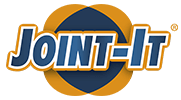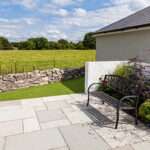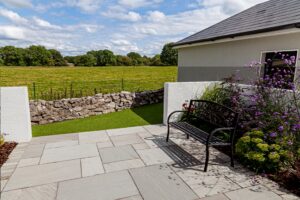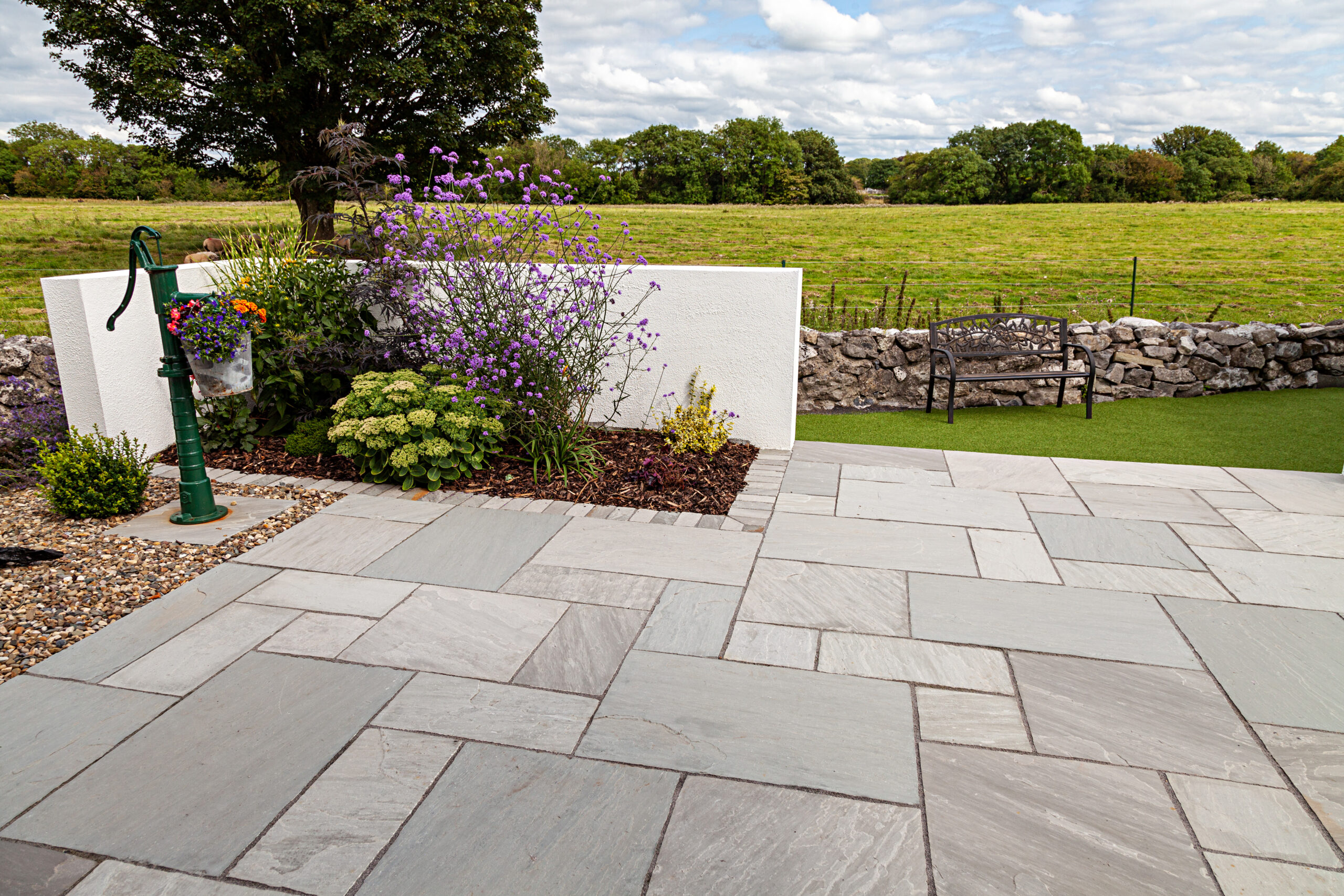
It has never been so hard to choose paving for your patio or driveway, and therein lies the problem – there’s just so much! How on earth can anyone decide what is right for their project?
Types of Paving
Firstly, it helps to decide what type of paving material(s) are worth considering. Most people nowadays go for flags or slabs. These are the same – just different geographical terminology – but there are other options too. Block paving, perhaps? Decorative printed concrete? Maybe a loose covering, some form of gravel or shingle?
Block Paving, Printed Concrete & Gravel
There is a huge range of block pavers, most of which are coloured and/or textured concrete. There are some lovely clay pavers with their strong, rich, organic colours, as well as natural stone in dozens of variations available as pavers or as setts/cobbles. The price ranges vastly, from simple rectangular blocks that cost comparatively little (both to buy and to install), through to textured natural stone setts. These can cost two or three times more in terms of both material cost and labour to install.
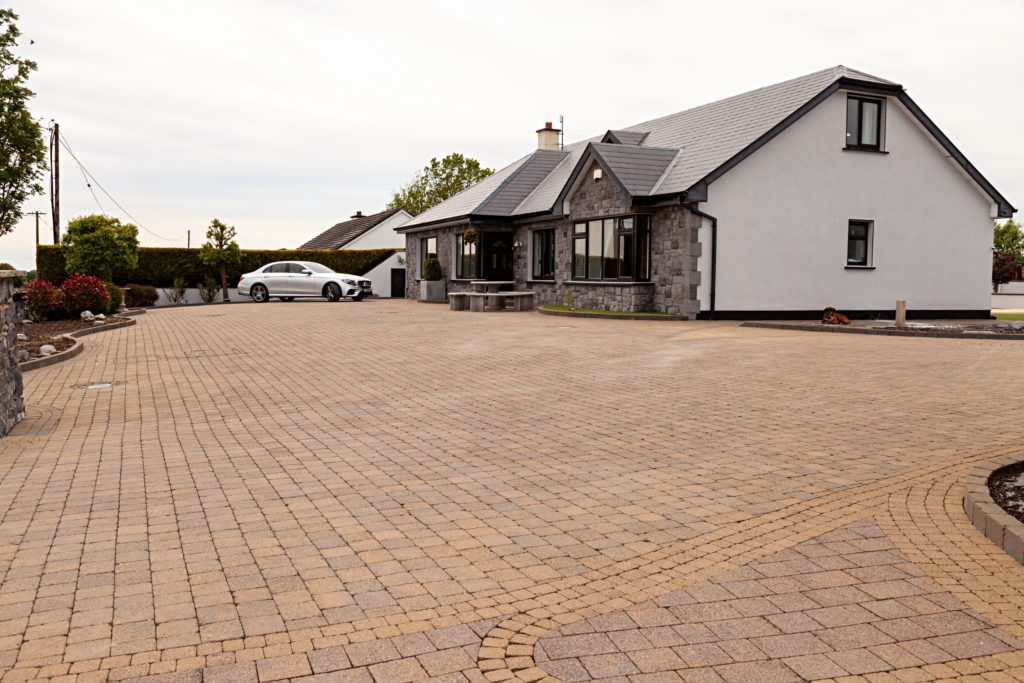 Block Paving
Block Paving
Decorative printed concrete is a specialist option and while there is a good range of colours, textures and patterns to choose from, it really does require an experienced installer to get the best result.
At the other end of the complexity scale, it is very easy to use gravel, shingle, crag, slate chippings or bark mulch to cover an area for a more informal appearance. Costs are minimal and the labour required is well within the capabilities of most DIYers.
The Popular Choice
Having considered all of that, there is no denying that flags or slabs are most peoples’ preference – and for good reason. There are so many options in colours, sizes, textures and materials. There is something that suits practically any and every patio project. Amid all that choice, start narrowing down the candidates by thinking about the type.
Three Main Types of Paving
There are three main groups of materials used for flags:
1. Stone, nowadays mostly imported;
2. Concrete, in pressed and cast formats;
3. Porcelain, also referred to as ceramic or vitrified.
There are pros and cons to each, as you would expect, but that’s what gives this group of paving such wide appeal and unrivalled versatility. There’s a deal of variation in cost, too, but that is largely in terms of purchase price. The installation cost, whether it’s riven sandstone, textured concrete, or timber-effect porcelain, is pretty similar.
Where Is Most Paving Imported From?
Stone was the original material for flags, or flagstones as they were known. Long before we had reliable concretes to cast into slabs, we used flattish pieces of hard-wearing stone to cover the ground and provide a usable and safe surface. Originally, stone was locally sourced. It’s heavy, so it wasn’t dragged any further than absolutely necessary. Nowadays the bulk of the stone used for paving comes from Asia, particularly China and India.
Indian Stone
The incredibly popular riven sandstones mostly hail from India. Of late, sandstones that have been through secondary processing have grabbed more market share. Honed stone (smoothed) is highly popular now for chic, contemporary gardens. Antiqued stone (softened at the edges) remains a firm choice for those keen on a more cottagey style. There are some excellent limestones also coming from India – the Kota Blues and Yellows/Browns are superb paving stones and often have lower maintenance requirements than sandstone.
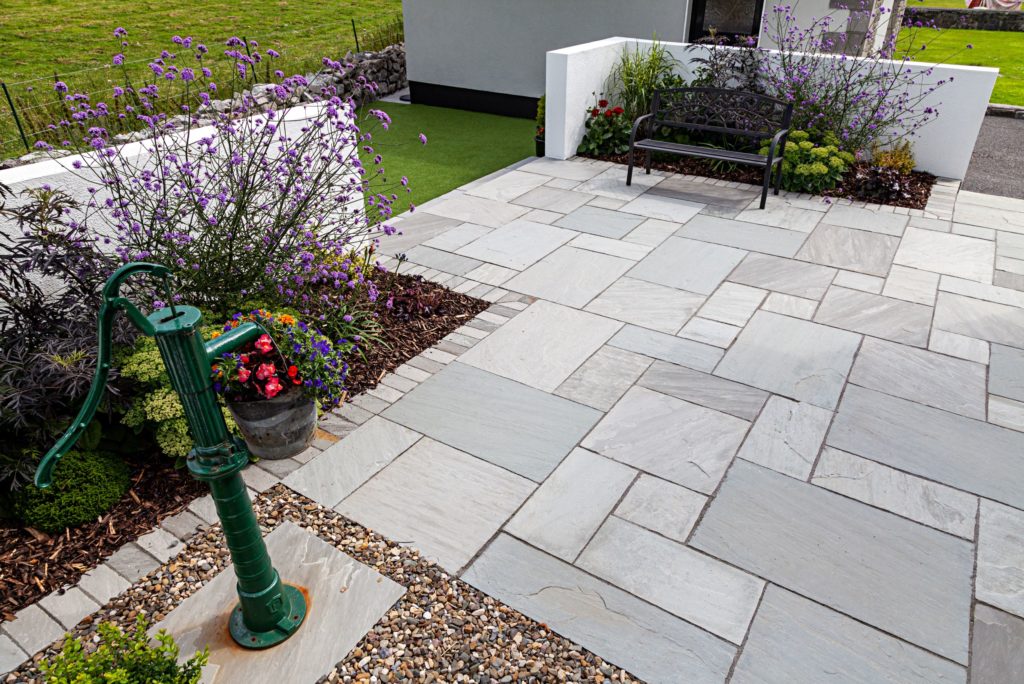
Black Limestone
Black limestone, often named as Kadapha Black, doesn’t stay black for long thanks to the slightly acidic rain that we endure. This ‘etches’ the surface and tones it down to a soft, steel grey in just a few months. There is an interesting article here about the “curse” of black limestone. There are colour enhancers that can re-intensify the black colour but the stone itself will naturally fade if left untreated.
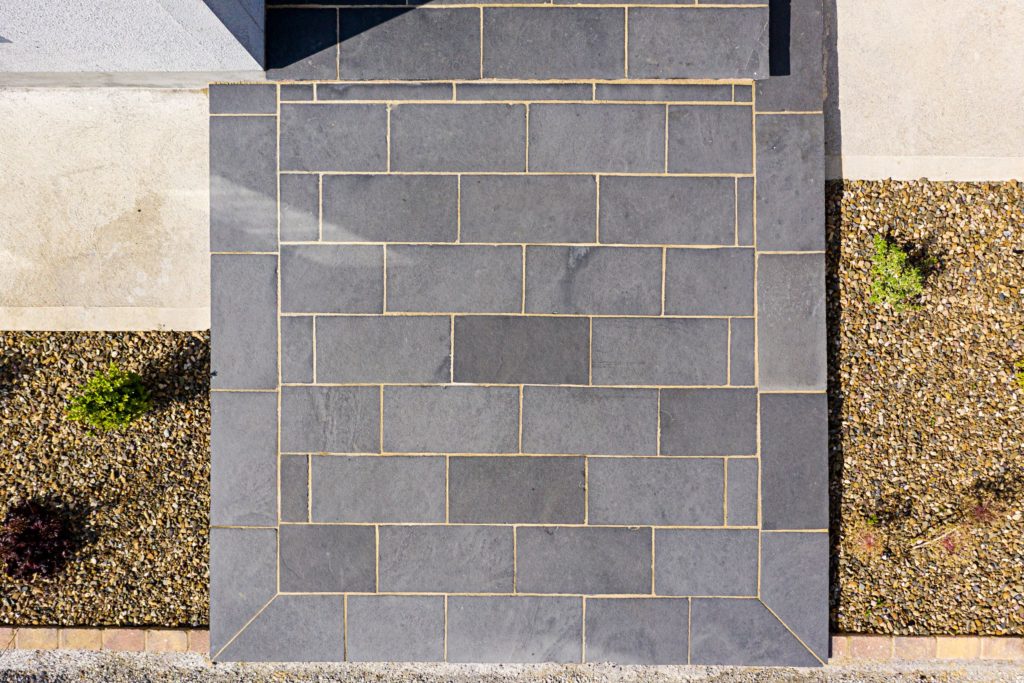
Slate Paving
If you want a black or dark stone, Brazilian slates are another excellent paving stone, as well as one of the sultry granites coming from China. Granite is usually cut and processed to give a smoother texture than the riven stone. Most of what we see is some variation on a grey, from sparkling, shiny, silver grey, through to deep, sombre charcoal greys, with hints of yellows, browns, dusky pinks and reds all available if required.
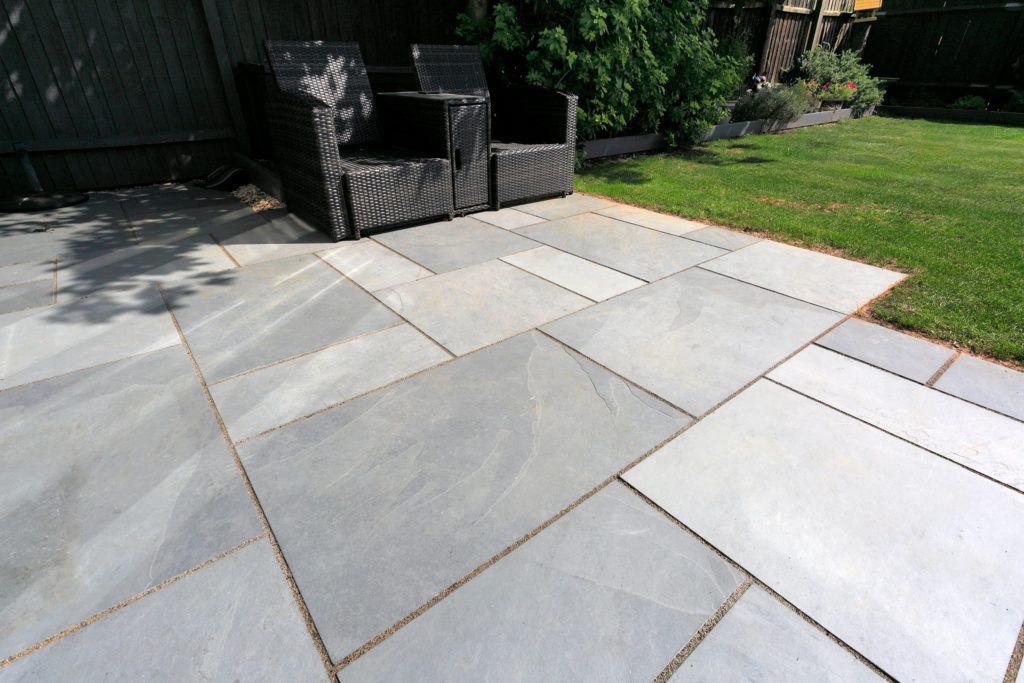
Concrete Slabs
Concrete flags are either pressed, which tend to be smoother or lightly textured, often with decorative aggregates exposed at the surface; or they are cast which is preferred for flags replicating natural riven stone or old bricks. All concretes rely on dyes for their colouring and all dyes will fade over time. Good dyes are expensive, but the UV-stable colours (more resistant to fade) will give many years of service and the hues tend to ‘mellow’ rather than fade. Be wary of ‘bargains’ – low cost products usually make economies by using lower quality dyes and less of them.
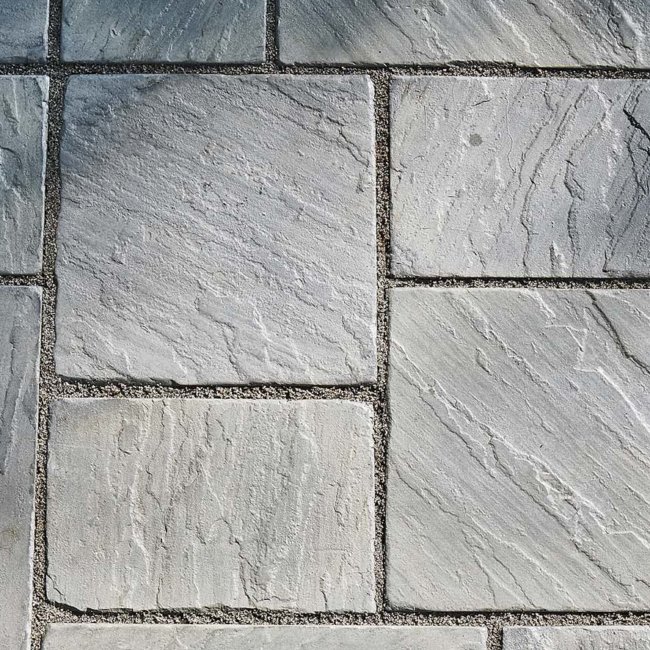
Porcelain
Porcelain has taken the world of paving by storm over the past few years. It has almost limitless pattern, style and colour options, along with the option of subtle textures. It is said to be much lower maintenance but its crisp, clean, contemporary styling doesn’t suit everyone. These are effectively tiles, thicker versions of those on the kitchen floor or bathroom walls. Most porcelain for paving is 20mm thick but there are thinner options available. Porcelains are virtually impermeable, hence their resistance to dirt and stains, but that doesn’t mean they don’t get dirty or stained. They will require some simple cleaning occasionally. Spills are best wiped-up as soon as possible.
There’s no denying that porcelain, ceramic or vitrified paving, whatever you wish to call it, offers a whole new dimension for contemporary garden design and for those looking for a lower maintenance option.

There so much choice out there, so take your time when choosing paving for your patio or driveway. Browse the brochures, look at what your friends and family have, compare and contrast. There is a paving out there that is absolutely ideal for your garden.
This article “How to Choose Paving For Your Patio or Driveway” was written by Tony McCormack in conjunction with Joint-It.
Joint-It are a leading manufacturer of professional jointing and stone care products. All of the joints between the paving slabs in the photos of this article are filled with our leading paving grout.
Joint-It Simple is a world-renowned paving jointing product that offers long-term durability, weed-resistance and power-washer resistance.

